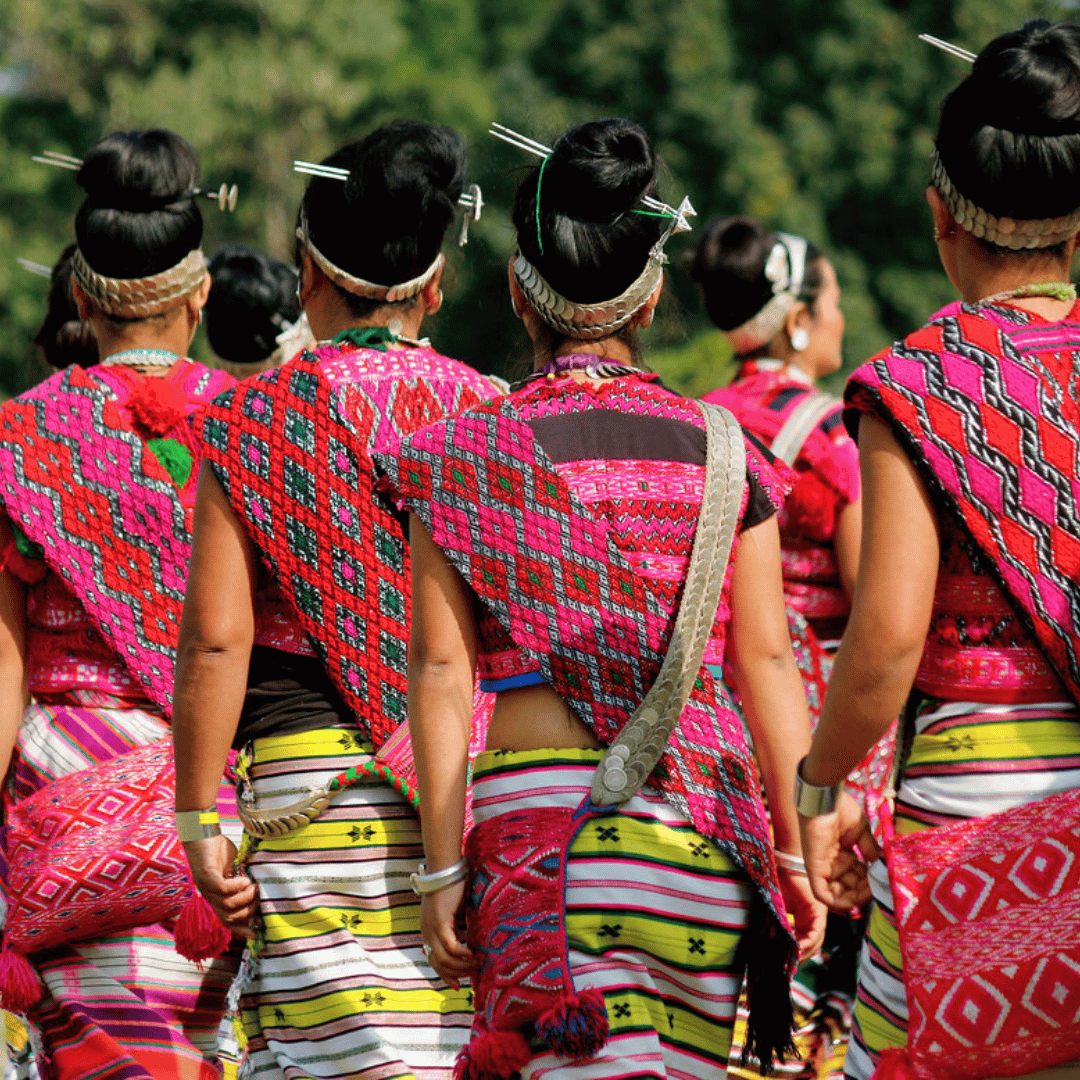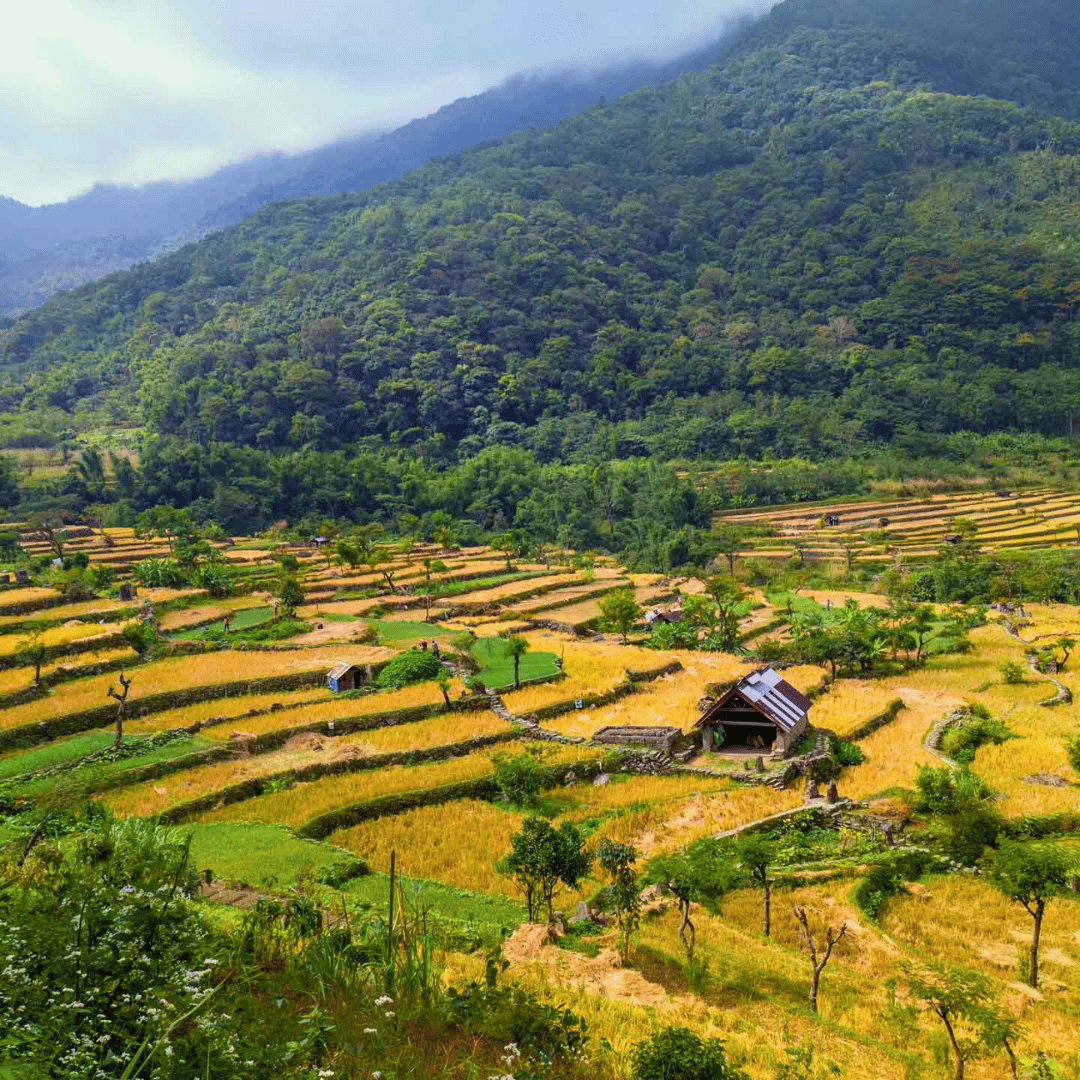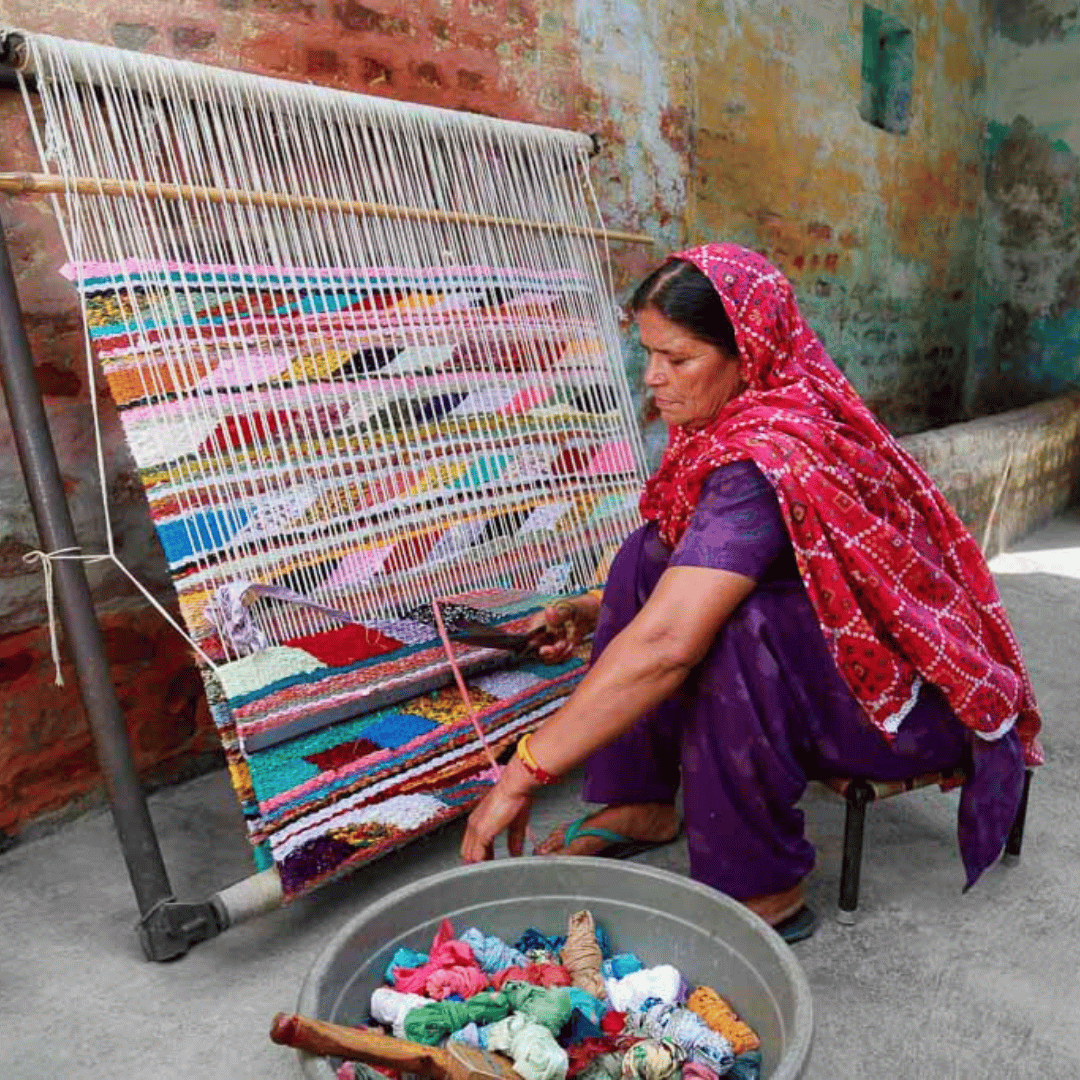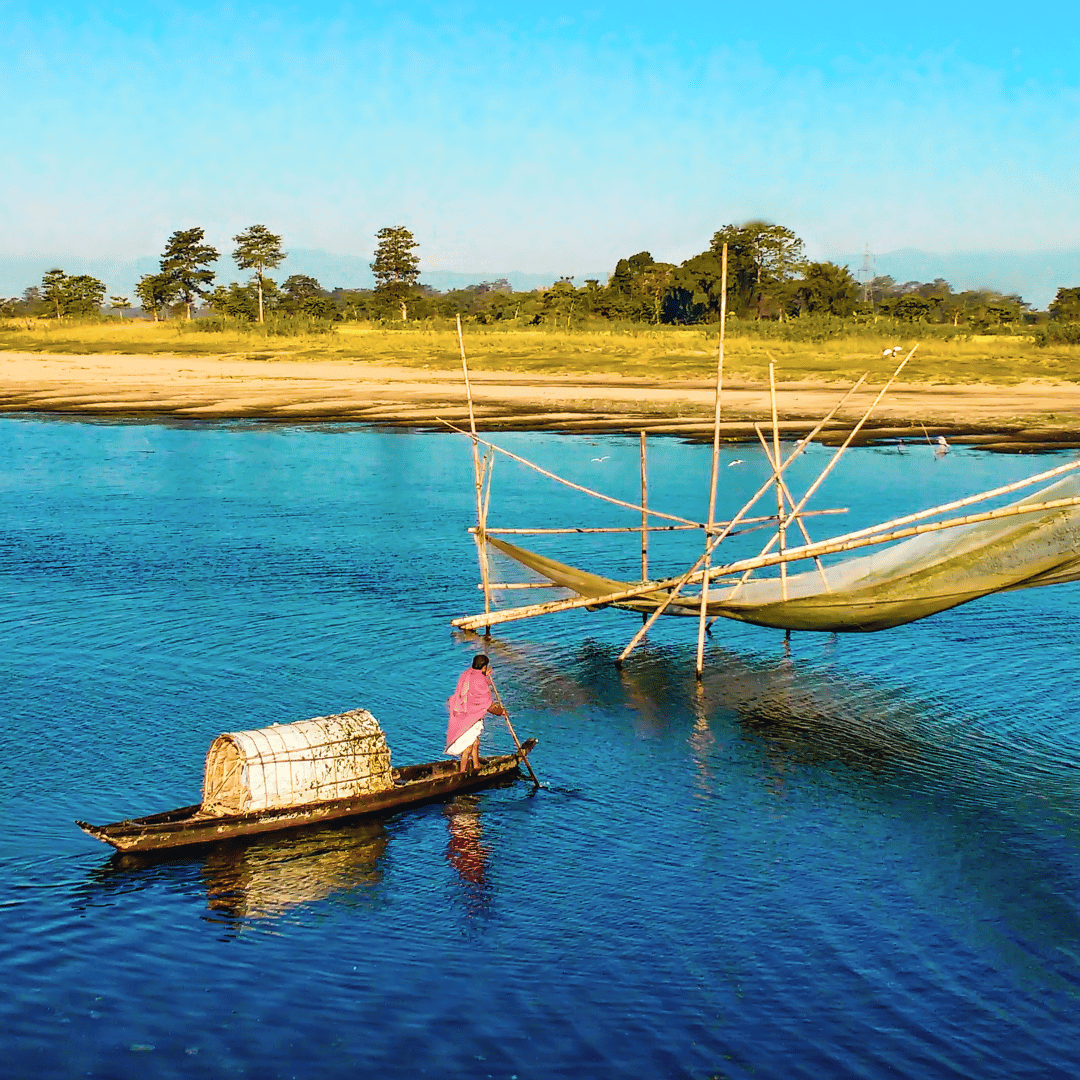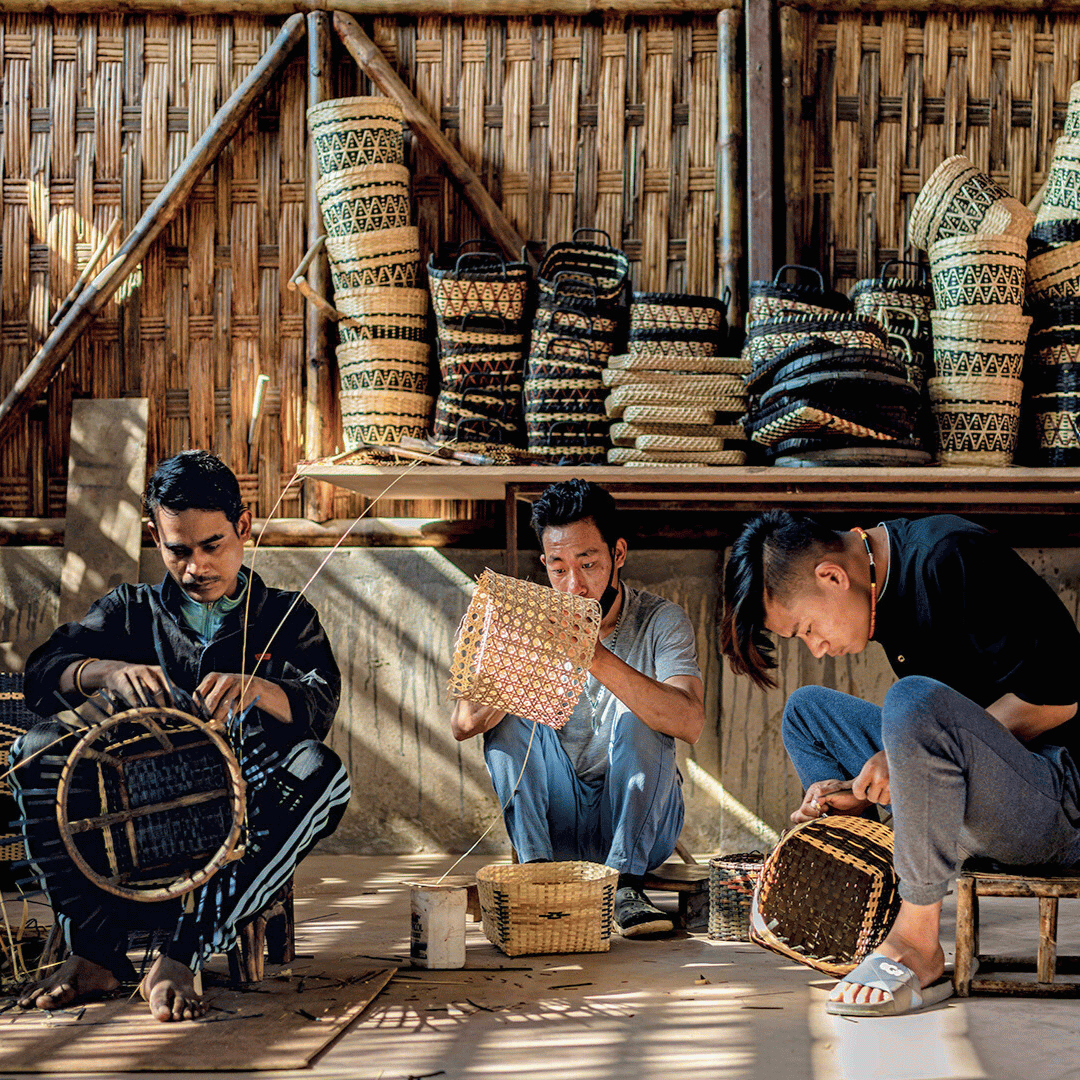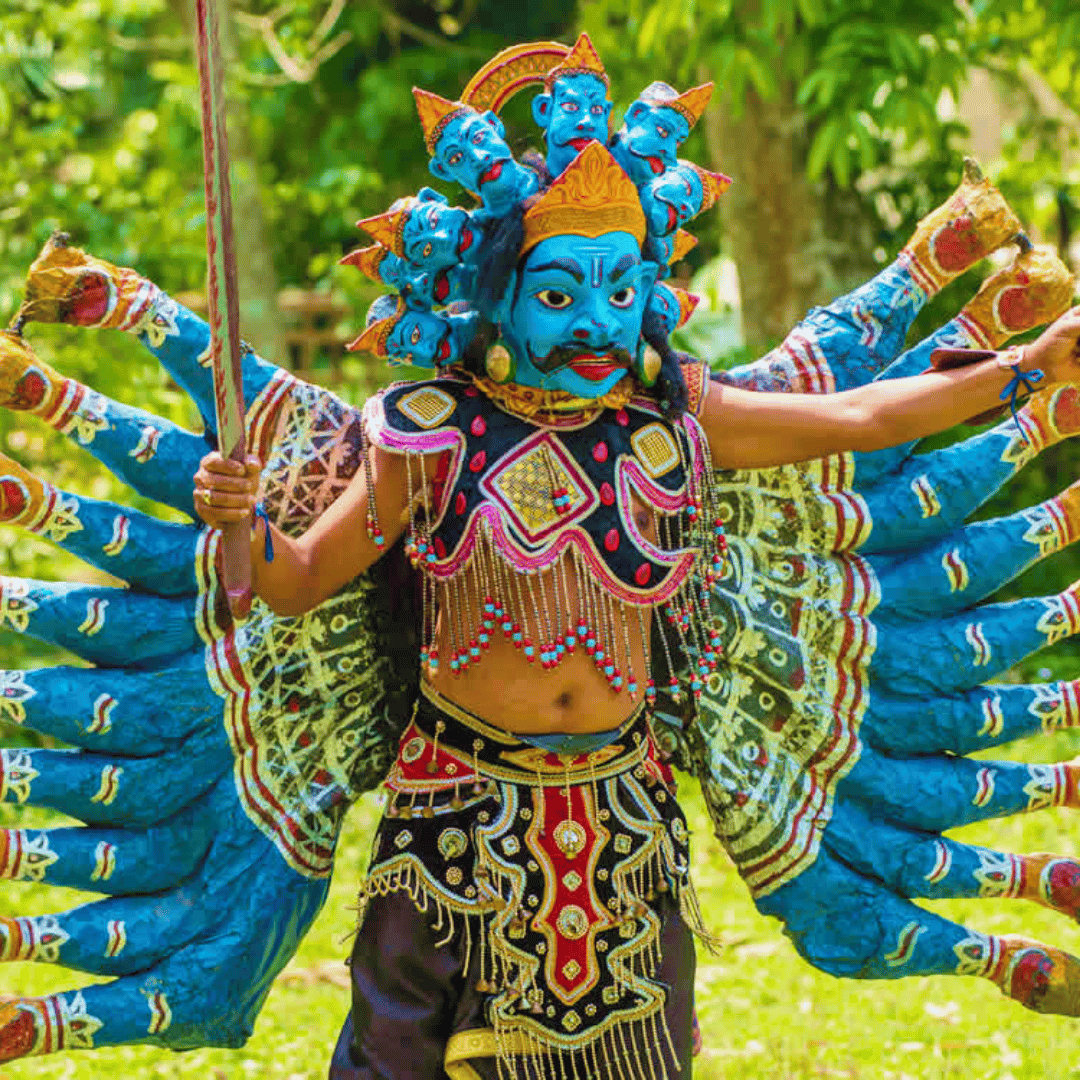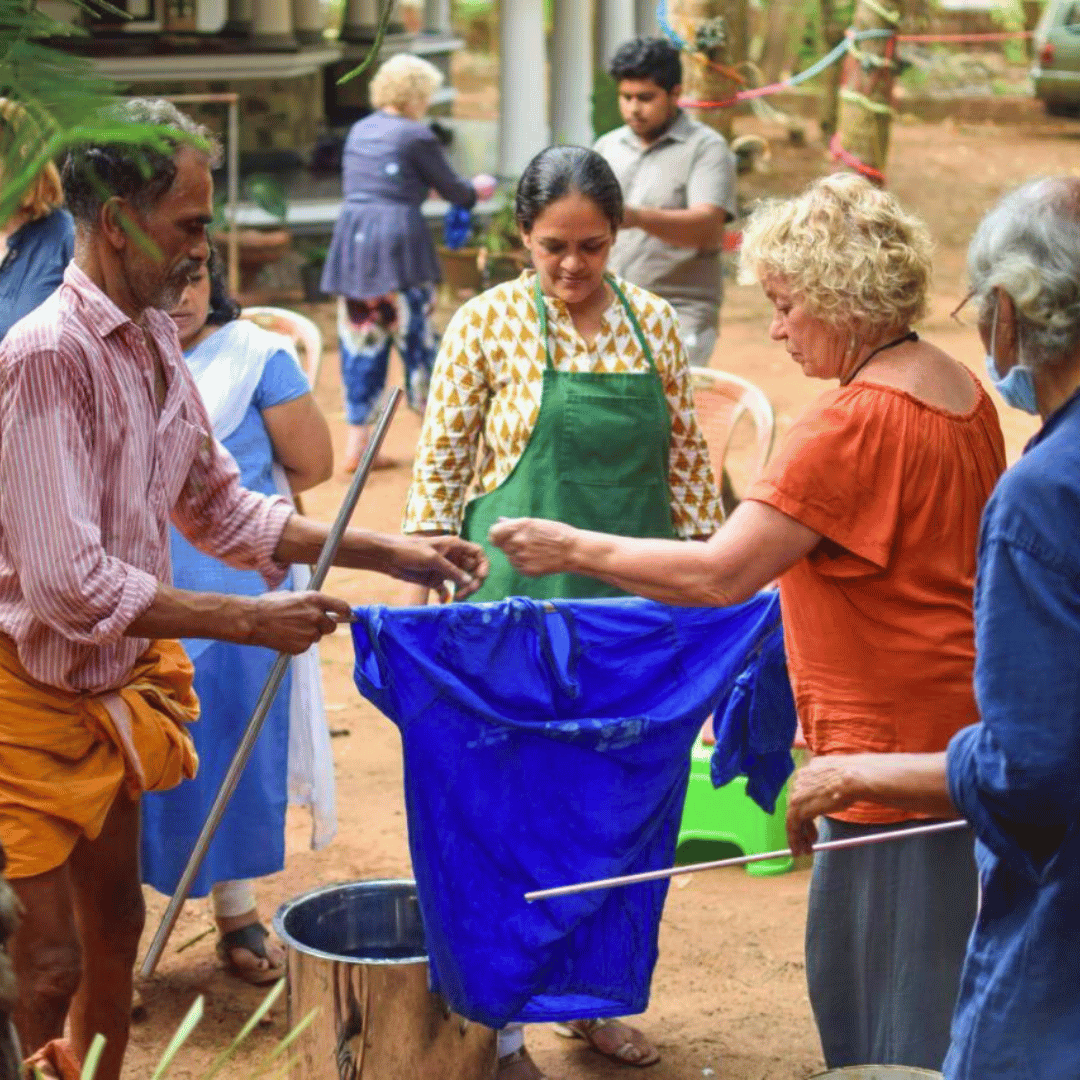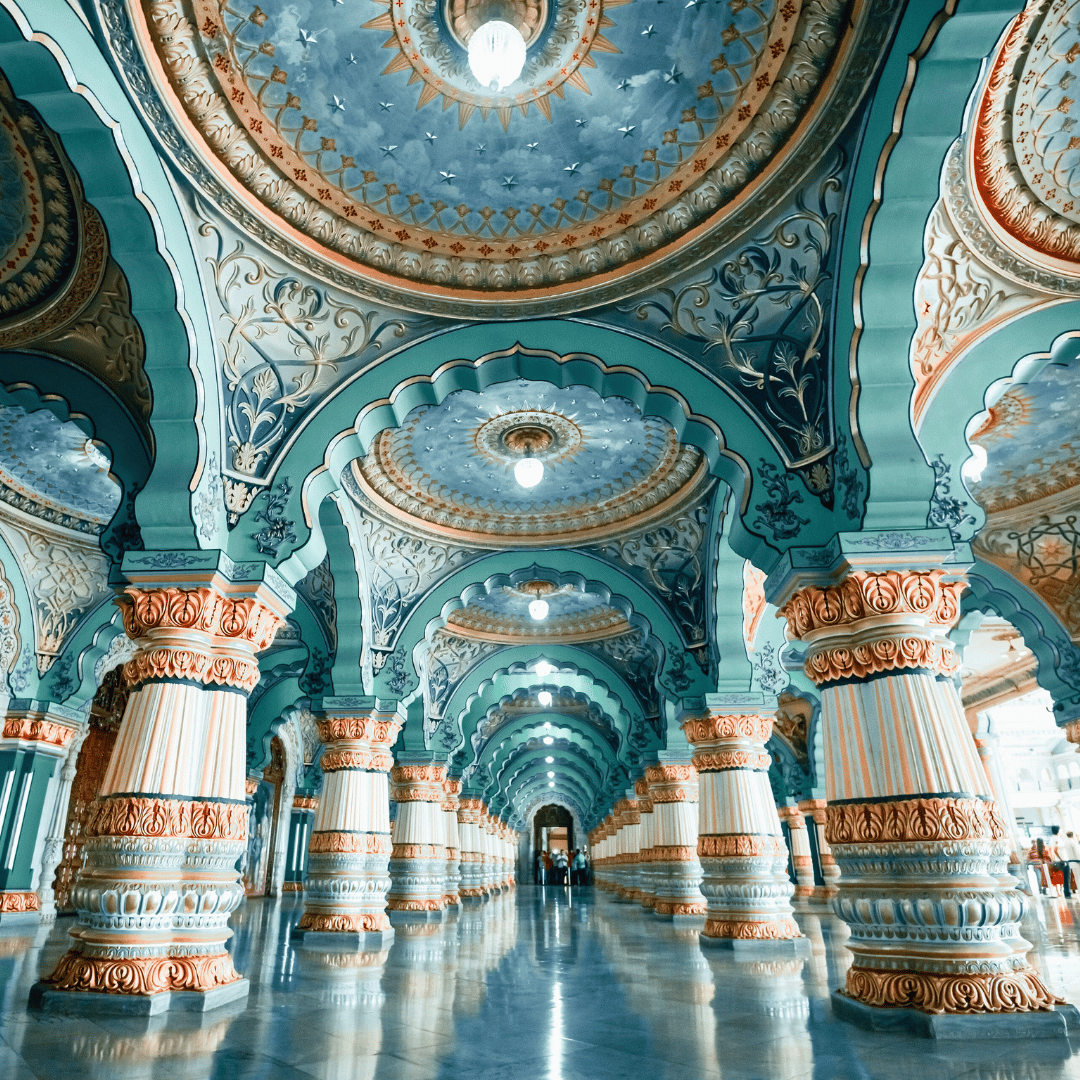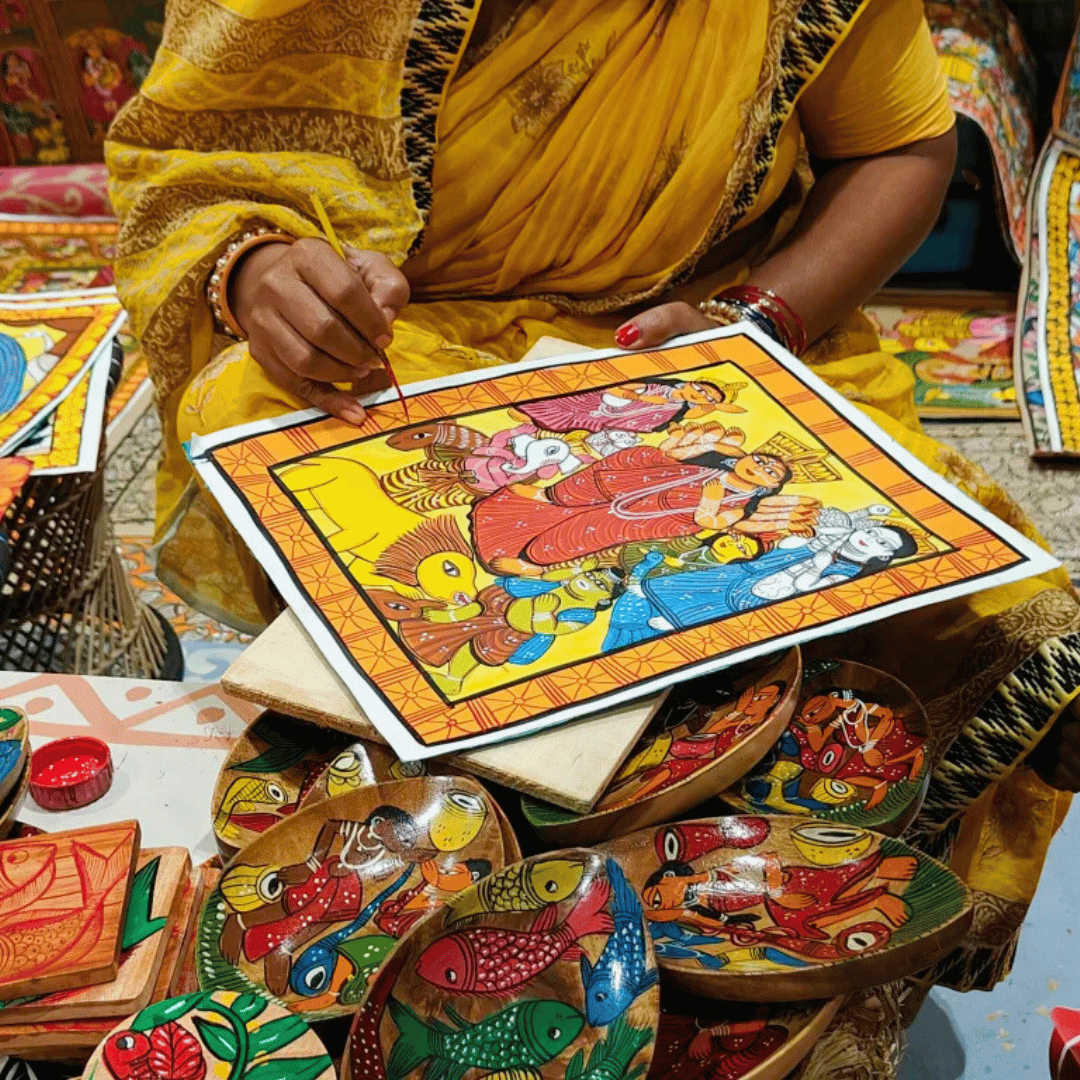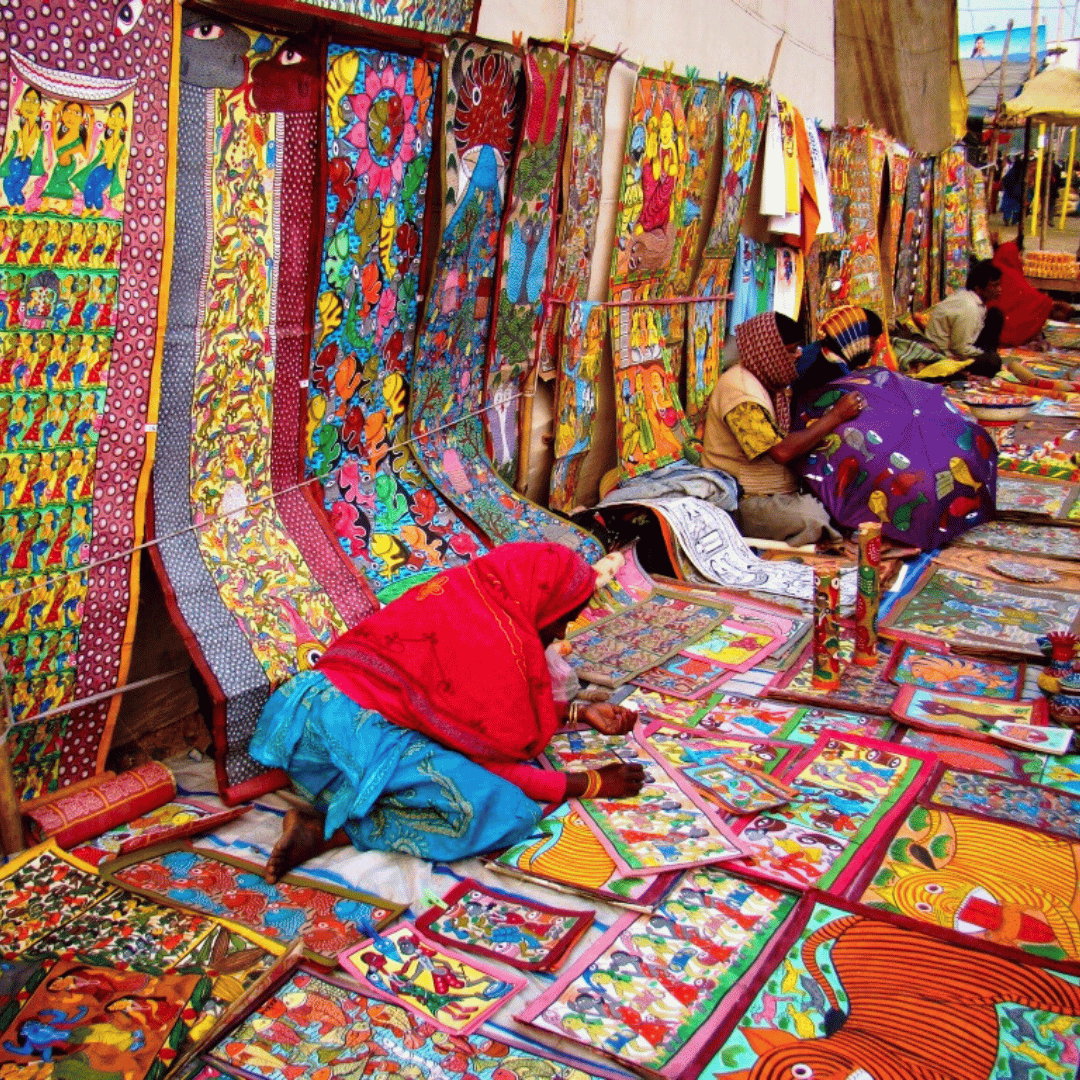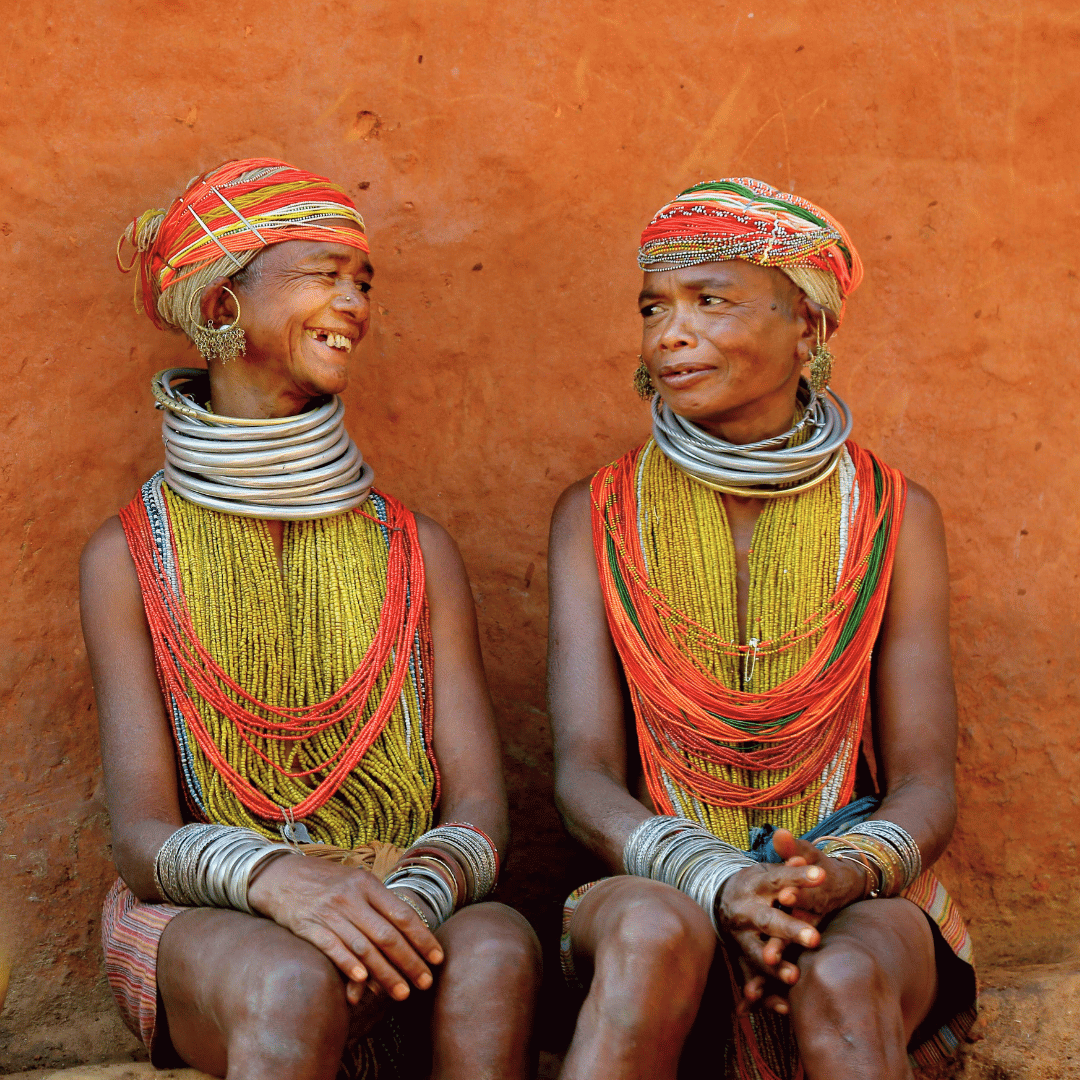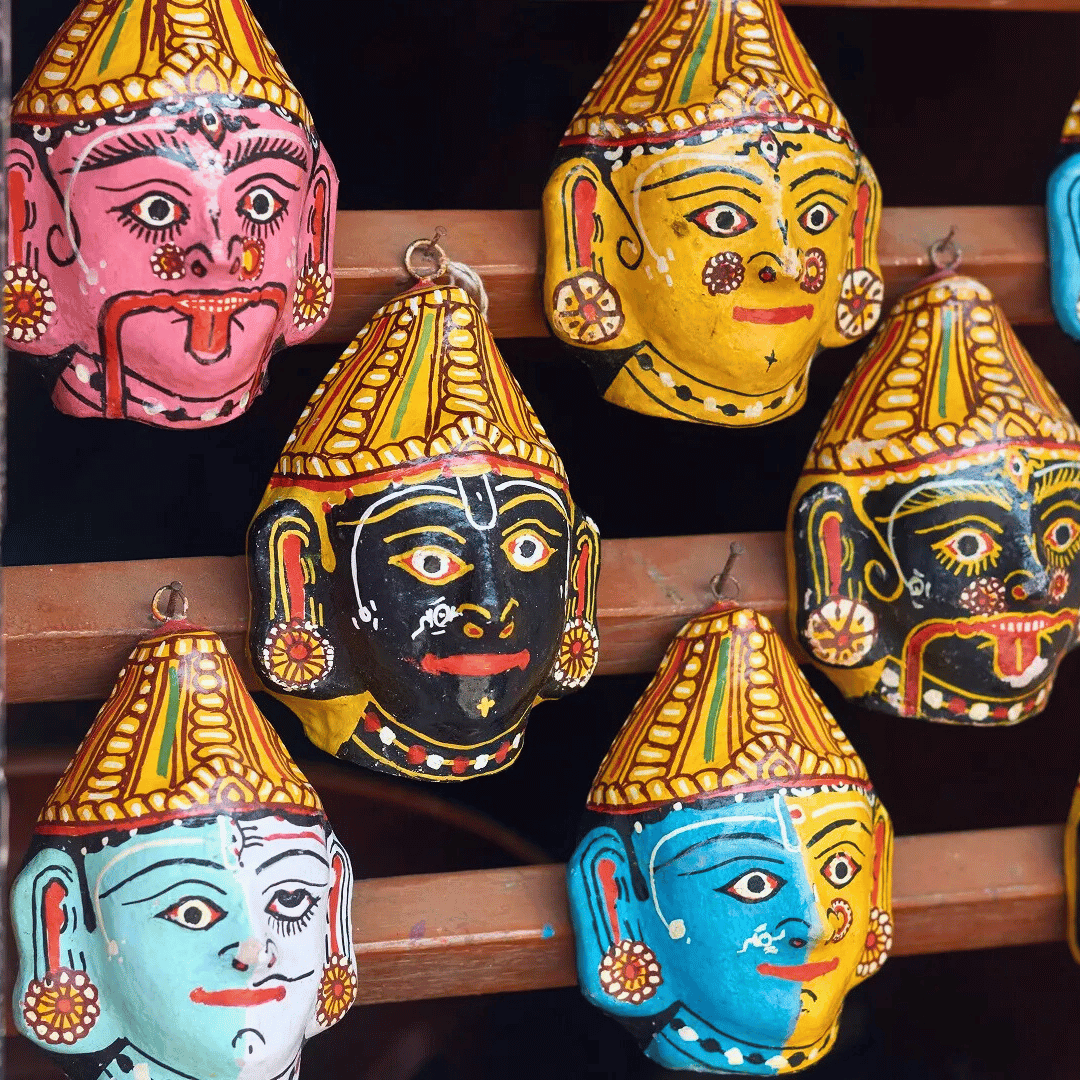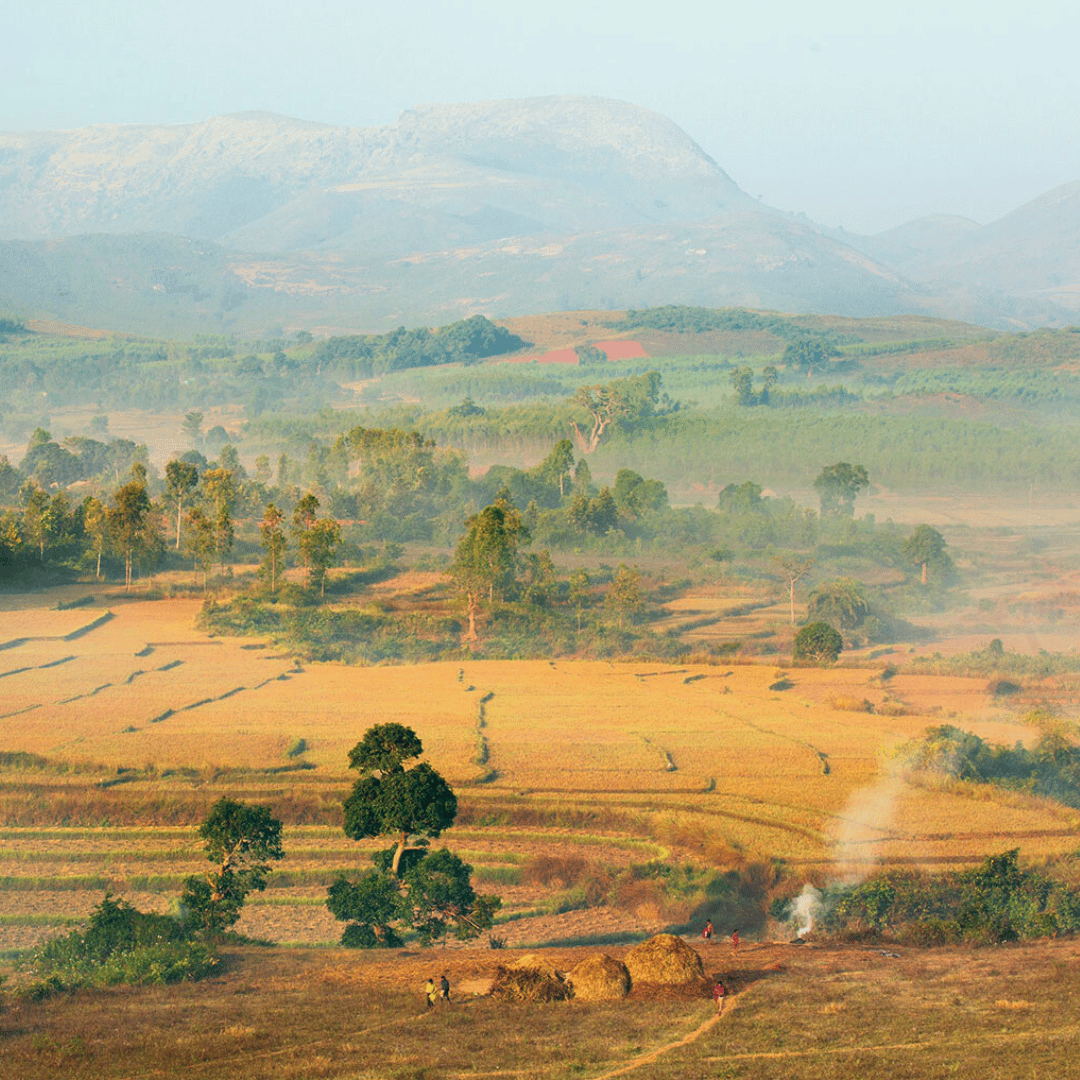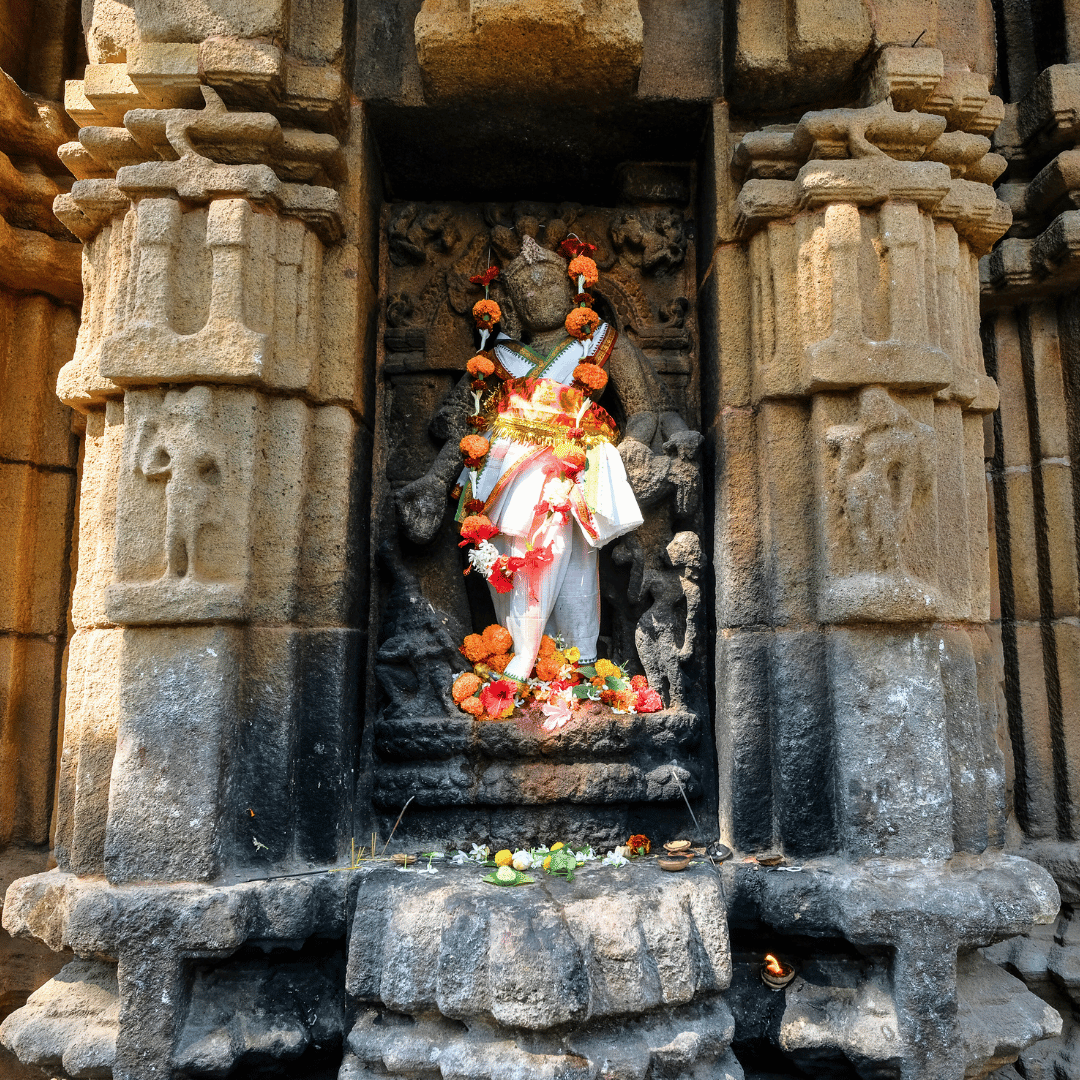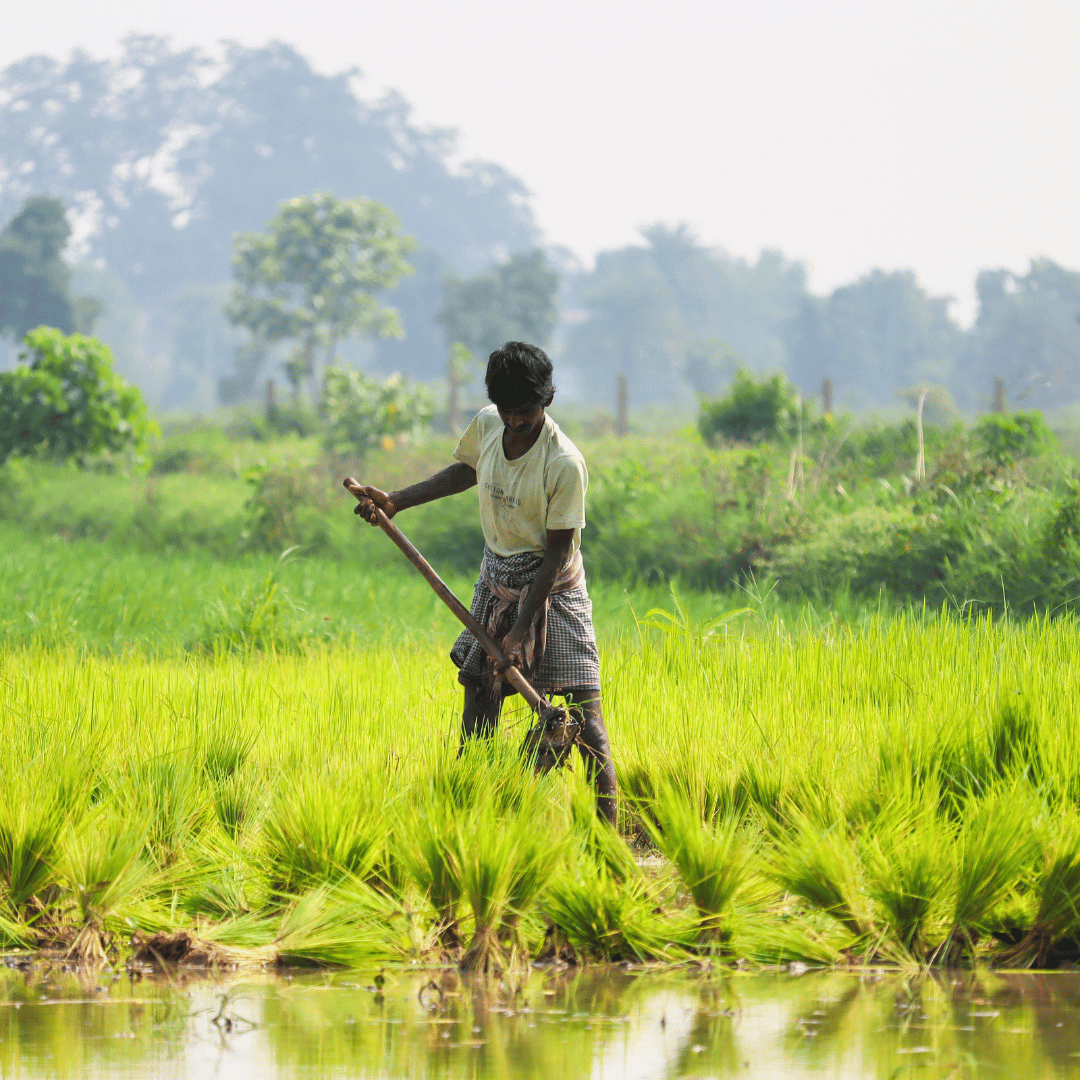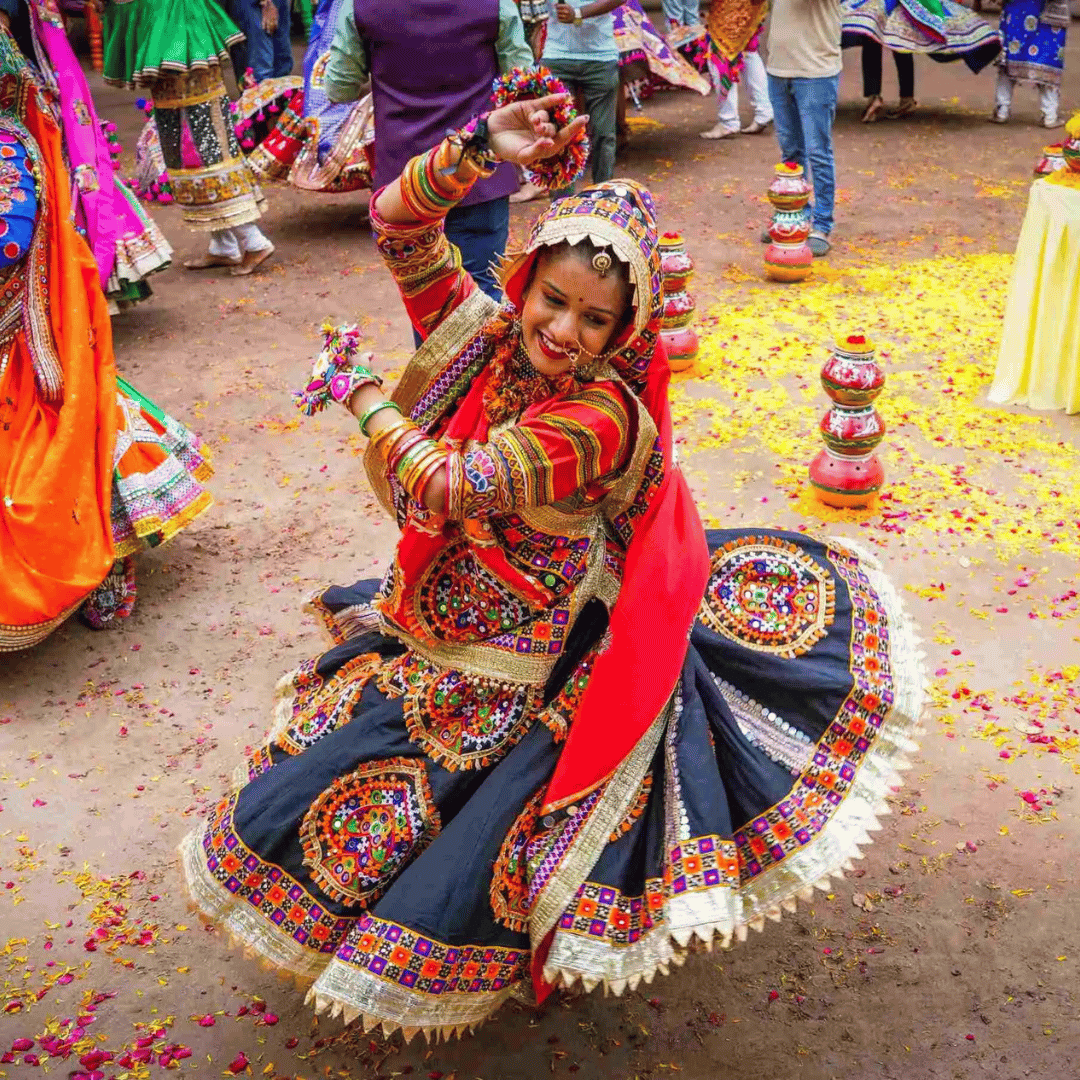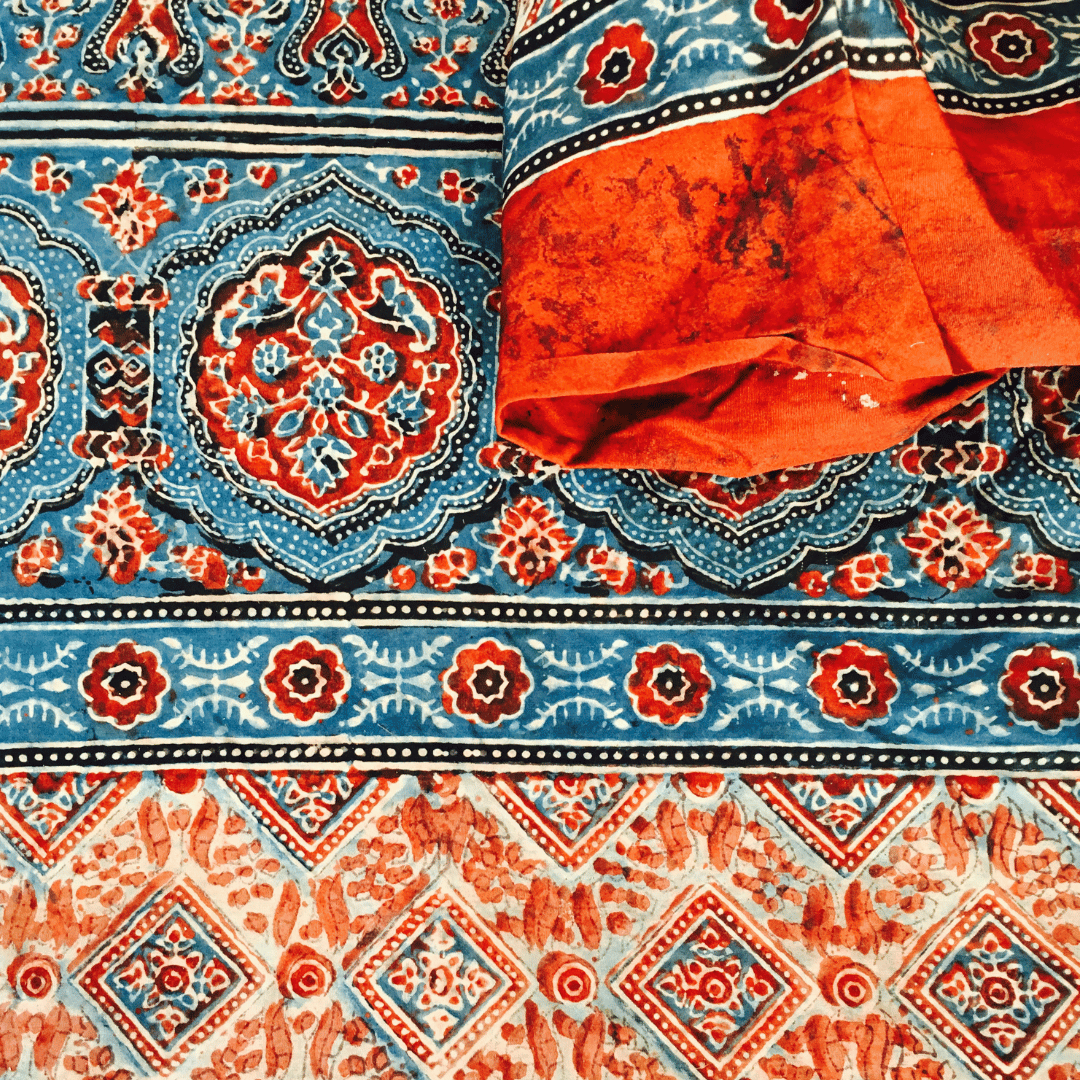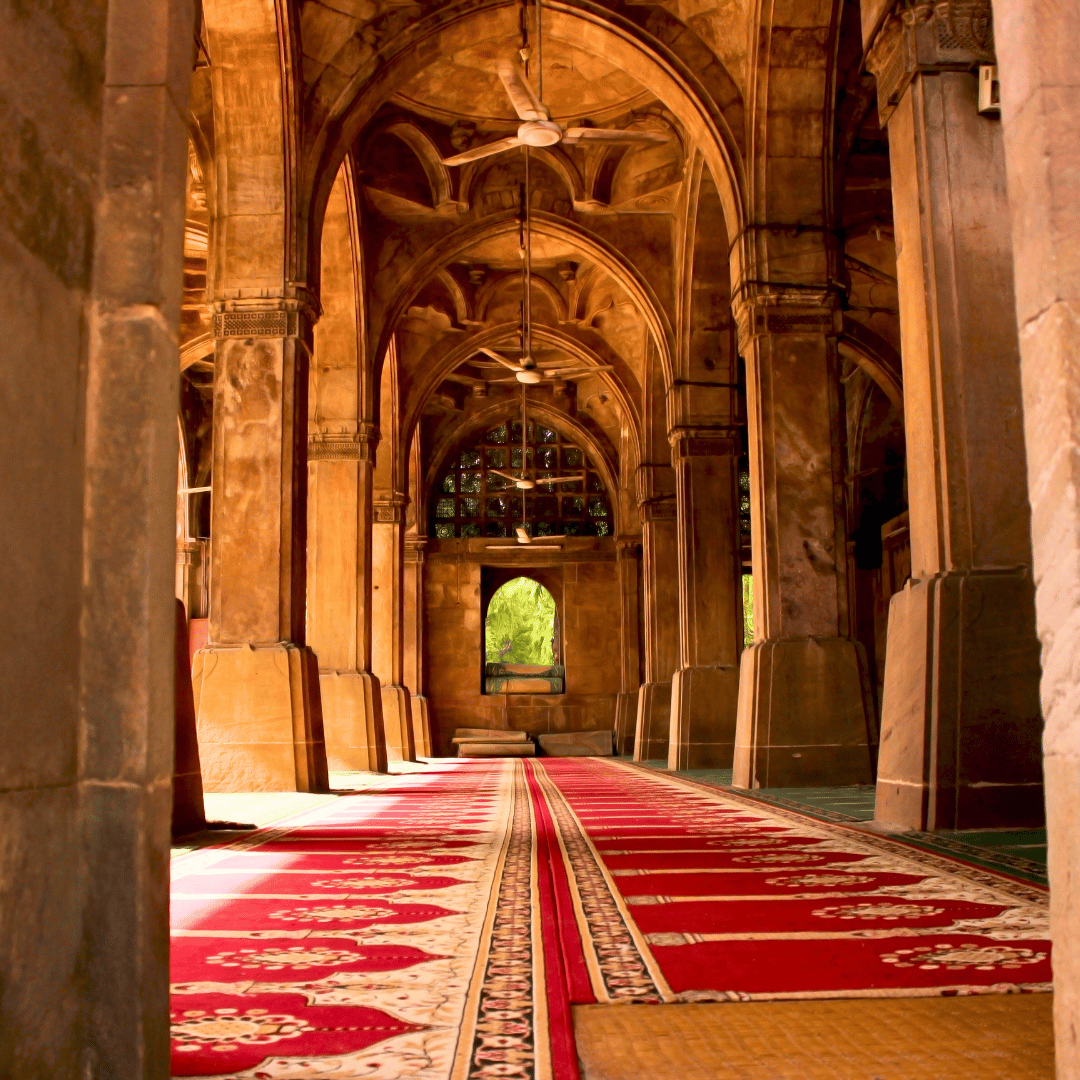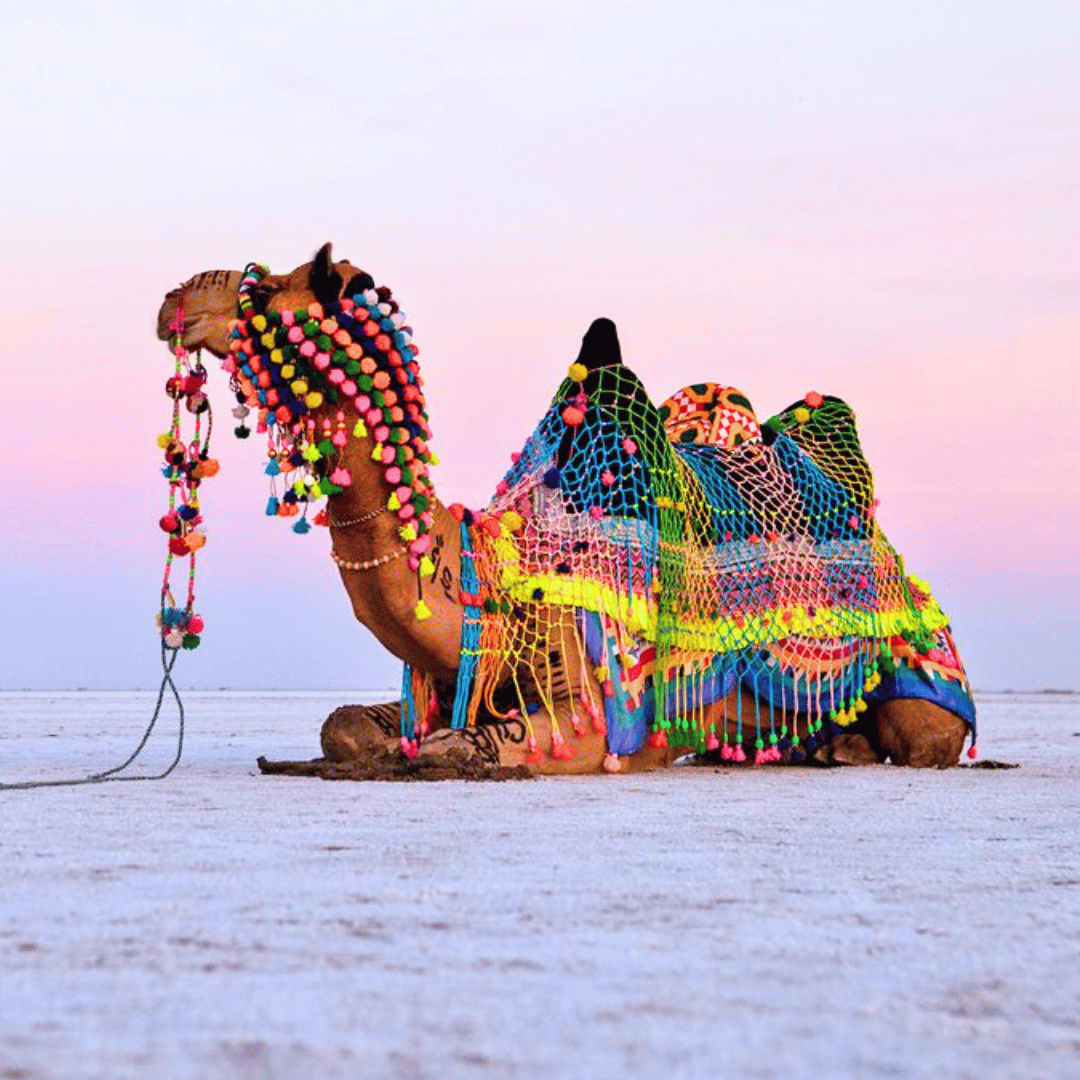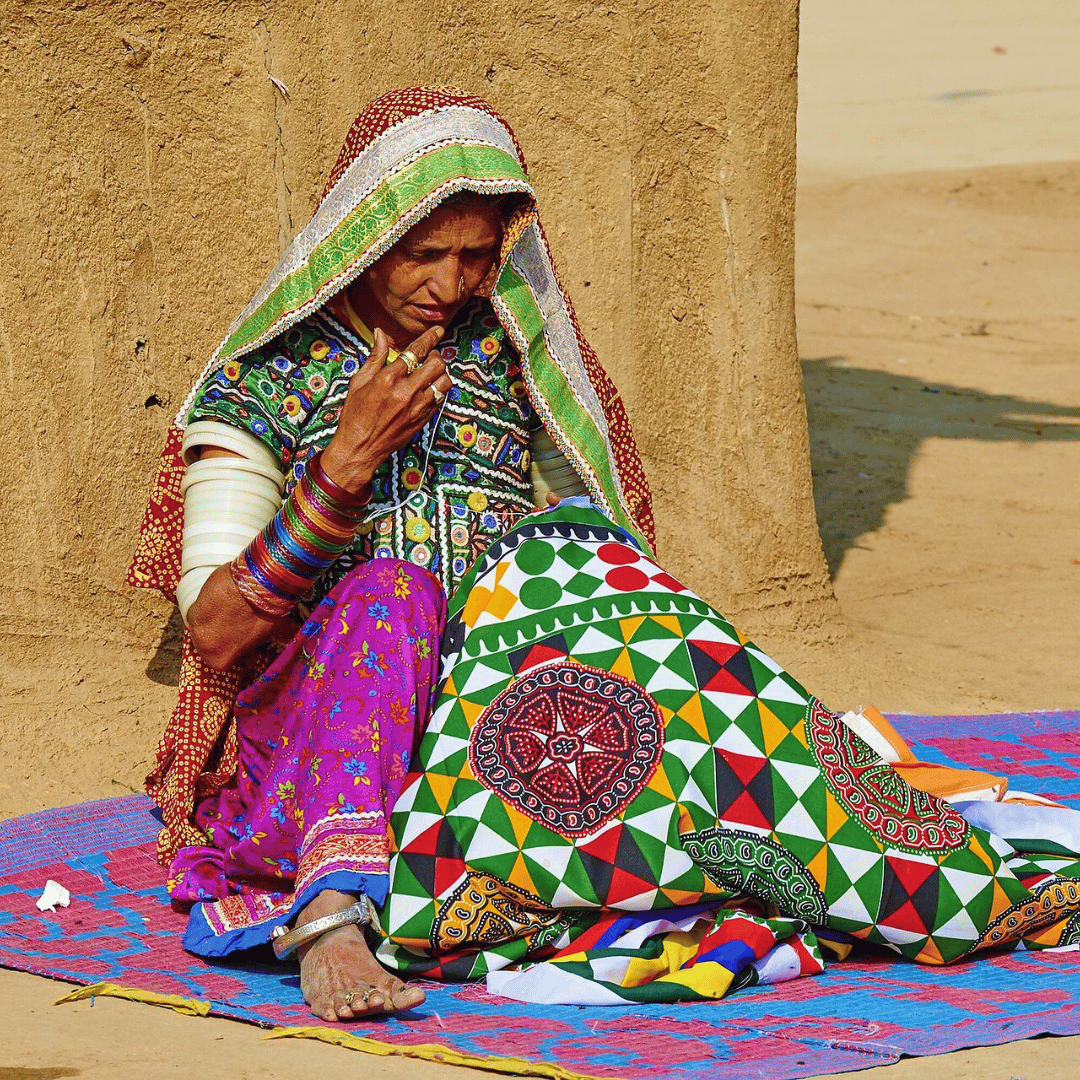North East Textile Tour Itinerary
-
Welcome to India! You will be met on arrival at Kolkata Airport and transferred to your hotel. Once you’ve settled in, the remainder of your day is free to rest or begin exploring the city at your own pace.
Kolkata, formerly known as Calcutta, was founded in 1690 along the banks of the Hooghly River as a trading post for the British East India Company. It quickly grew in stature and, by the mid-18th century, became the capital of British India - a title it held until 1911. During this period, Kolkata flourished as a centre of colonial administration, commerce and culture, earning it the title “Jewel of the East.” Grand colonial buildings, wide avenues and cultural institutions from that era still dot the city, adding to its distinct character.
Today, Kolkata is a vibrant and multicultural metropolis - the third largest city in India - and remains the commercial, business and cultural hub of eastern India. Its diverse population, rich literary and artistic heritage, and deep political history make it one of the country’s most intellectually engaging cities. From old-world charm to modern development, Kolkata offers a unique blend of tradition and transformation, setting the stage for your journey through India’s northeast.
-
Begin your exploration of Kolkata with a full-day guided tour, designed to introduce you to the city's layered history, cultural richness and architectural diversity. There’s no fixed route - your guide will tailor the day to your interests - but here are some key areas and landmarks you may wish to include.
Start with Dalhousie Square (now B.B.D. Bagh), the colonial heart of the city, once the administrative centre of British India. This area is known for its striking collection of colonial-era buildings, blending styles from Victorian and neoclassical to Baroque. Here you’ll see landmarks like the Writers’ Building, General Post Office and St John’s Church, each offering a glimpse into the city’s imperial past.
Continue on to the Victoria Memorial, one of Kolkata’s most iconic landmarks. Built in white marble and set amidst sprawling gardens, this grand structure commemorates Queen Victoria and now houses a museum with an impressive collection of artefacts from the British era. Nearby lies the Maidan, a vast open space known as the 'lungs of the city' - a place where locals gather to play cricket, walk, or simply relax under the shade of trees.
Park Street is another must-visit - a vibrant stretch once known as the pleasure capital of the British Empire. Lined with restaurants, cafés, clubs, colonial homes, churches, and institutions, Park Street has long been a social and cultural hub for Kolkata's elite and middle classes. It’s a great place to pause for lunch or a coffee while soaking up the atmosphere.
Later, visit Sovabazar, a traditional Bengali neighbourhood rich in cultural heritage. This area is known for its unique blend of architectural styles - from Mughal to colonial, Victorian to local Bengali - and is home to historic mansions, narrow alleys and small temples. It also offers a more intimate view of Kolkata’s cultural roots and day-to-day life beyond the well-known landmarks.
End the day with a serene sunset cruise on the Hooghly River. As the sun sinks behind the city skyline, sail gently upriver to visit Belur Math, the peaceful headquarters of the Ramakrishna Mission, known for its inclusive design that merges architectural elements from Hindu, Christian and Islamic traditions. Continue on to Dakshineswar Kali Temple, an important pilgrimage site with its distinct temple towers reflected in the river. The soft light, flowing water and distant temple bells make for a memorable and contemplative close to your first full day in Kolkata.
-
Today’s focus is on India’s diverse and regionally distinctive textile traditions, with a particular emphasis on the techniques, motifs and materials found in eastern India. Bengal, in particular, has long been known for its exceptional craftsmanship in fabric and embroidery - a legacy you’ll explore through village visits, museum collections and local artisan workshops.
Begin the morning with an excursion to one or two nearby villages known for their textile production. Bengal has a long-standing reputation for producing exquisite handwoven muslin, once exported around the world for its fine texture and lightness. Today, while muslin is still admired, many villages have developed their own unique weaving styles using traditional looms and age-old methods. These include intricate jamdani patterns and finely woven cottons. During your visit, you’ll have the opportunity to enter weavers’ homes and observe the process up close - from the dyeing of yarn to the rhythmic clatter of the loom - and speak with the artisans themselves. These are small, family-run operations where weaving is not only a livelihood but also a cultural legacy passed through generations.
In the afternoon, head to the Gurusaday Museum, which houses a remarkable collection of folk and tribal art from across undivided Bengal and broader eastern India. The museum’s textiles collection is especially notable for its Kanthas - traditional embroidered wraps or quilts made from repurposed saris and fine cotton cloth layered and hand-stitched with colourful folk motifs. These intricate, personal creations were once used in Bengali households as bedcovers, wraps or baby blankets, and are now recognised as a distinctive form of textile art. The collection spans from the early 19th to early 20th centuries and offers insight into both domestic life and creative expression among rural Bengali women.
Later in the afternoon, visit Kumartuli, a neighbourhood famous for its skilled artisans who specialise in crafting religious idols - particularly of goddess Durga and goddess Kali. Using straw, bamboo and clay from the Hooghly River, these artisans create elaborate, life-sized figures that are central to Kolkata’s major festivals. A walk through this maze of narrow lanes and workshops reveals a fascinating world of artistic labour and seasonal creativity. The lead-up to Durga Puja (September to October) is the busiest period here, with entire families working long hours to complete their commissions.
To round out the day, stop by two of Kolkata’s most iconic textile stores, where you’ll find high-quality examples of Bengali handlooms, silks, jamdani and Kantha work. It’s a great opportunity to admire the contemporary expression of traditional techniques and, if you wish, to pick up a few pieces to take home. Whether you’re an avid textile enthusiast or simply curious, today offers a richly woven insight into the cultural fabric of Bengal.
-
This morning, transfer to the airport for your flight to Dibrugarh in Assam, the gateway to India’s north-eastern tea country. On arrival, you’ll be met by a local guide and driven to your accommodation at Mancotta Heritage Tea Bungalow, a charming colonial-era residence set within a working tea estate. Built over 160 years ago during the British expansion of tea production in the region, the bungalow offers a unique stay steeped in local history. From its wide verandahs, you can look out across manicured lawns and flowerbeds to the surrounding landscape of Assam’s lush tea plantations - a peaceful and timeless setting.
In the afternoon, you’ll visit a nearby Assamese silk weavers’ village. Handloom weaving in Assam is not just an occupation - it is a deeply embedded part of daily life, particularly among women, and a significant expression of Assamese identity. With the highest concentration of handlooms and weavers in India, Assam’s weaving heritage is both vast and vibrant, with traditions that have been passed down through generations.
You’ll learn about the three main types of silk native to the region - muga, pat, and eri - each produced from different species of silkworms and prized for their unique qualities. Muga silk, exclusive to Assam, is known for its natural golden sheen, strength and durability. It cannot be dyed or bleached, which means the fabric retains its warm, rich colour. It is traditionally woven into the ‘Mekhela Chadar’, the traditional dress worn by Assamese women. Pat silk is brilliant white or ivory and is often used for more delicate, decorative garments. Eri silk, sometimes called ‘peace silk’ because it allows the silkworm to leave the cocoon before harvesting, is soft and warm, commonly used for shawls, wraps and quilts.
As you walk through the village, you’ll have the opportunity to meet local weavers, observe their techniques, and see how natural fibres are transformed into beautiful, handwoven fabrics. This visit offers a rare chance to engage with one of Assam’s most enduring and meaningful traditions, providing insight into both the artistry and the everyday lives of the people who carry it forward. Return to the tea bungalow in the evening, where you might enjoy a quiet dinner and a cup of Assam’s famous brew while taking in the sounds of the estate at dusk.
-
This morning, depart Dibrugarh by road for the two-hour drive to Soikhowa Ghat, where your journey takes to the water with a ferry crossing over the upper reaches of the mighty Brahmaputra River. This stretch of the Brahmaputra is particularly captivating, offering a glimpse into the rhythm of river life that has shaped the culture and livelihoods of this region for centuries. The ghats (river landings) you pass along the way have been active since the British era and continue to serve as vital transport links between communities scattered across northeast India.
As the ferry cruises across the wide, slow-moving river, you’ll see fishermen casting their nets, small boats ferrying locals, and riverside settlements with children playing along the banks. It’s a peaceful yet vivid scene that offers a unique perspective on everyday life in Assam’s riverine heartlands.
Once you disembark at Sadiya Ghat, continue by road on a scenic two-hour drive that takes you into the foothills of Arunachal Pradesh. This stretch winds through quiet Assamese villages, fertile fields and gradually ascending forested slopes, with views becoming increasingly dramatic as you approach your destination.
Your accommodation is Dibang Valley Jungle Camp, an eco-friendly retreat tucked away in an orange orchard on the edge of the forest. The camp enjoys a commanding position overlooking the Dibang River basin, with sweeping views of densely forested hills and distant mountain ridges. With its peaceful setting and focus on sustainability, the camp offers a perfect base for exploring the region’s natural and cultural richness. You’ll be welcomed by warm local hosts and can settle into your cottage, surrounded by birdsong and the scent of citrus trees. The remainder of the day is at leisure - perhaps enjoy a quiet walk around the orchard, take in the views, or simply relax and listen to the sounds of the forest.
-
Today you’ll spend time visiting Mishmi villages in the surrounding area, with a particular focus on observing traditional textile weaving - a craft that holds deep cultural and social importance in this remote part of northeast India.
Unlike in most parts of India where weaving is typically carried out by men, in the Mishmi community - and indeed across much of the northeast - it is the women who are the custodians of the weaving tradition. Their looms are often set up within the home or in open courtyards, and the art is passed from mother to daughter, with patterns and techniques rooted in ancestral knowledge. Among the Mishmi, there is even a cultural belief, shared by some other tribes in the region, that prohibits men from weaving - a long-standing taboo suggesting that a man would lose his virility if he took up the craft. Instead, the men contribute through the making of fine bamboo and cane basketry, used for both practical and ceremonial purposes.
The textiles woven by Mishmi women are known for their bold, geometric patterns and rich colours. Typically, the base or warp of the cloth is black cotton, while the designs are worked into the fabric using shades of maroon red and deep pink, with occasional touches of green for contrast. A fine silver thread is often used to outline the motifs, giving the fabric a striking, luminous quality. These complex weaves are entirely handmade and can take weeks to complete, depending on the intricacy of the design.
During your visit, you’ll have the opportunity to sit with the weavers, observe their techniques and ask questions about the meaning and symbolism behind their designs. These visits also offer a deeper understanding of the connection between the textiles and the cultural identity of the Mishmi people - many of the patterns represent clan affiliations, spiritual beliefs, or elements of the natural environment.
This immersive experience not only provides insight into a unique textile tradition but also allows for genuine interaction with local communities, fostering a deeper appreciation for the skill, patience and cultural significance behind each handwoven piece.
-
Today offers a flexible and engaging mix of activities, depending on your interests and energy levels. For those keen to explore the surrounding landscape, you may opt for a full-day hike into the nearby mountains, accompanied by a local guide. The trails wind through dense forests, bamboo groves and ridgeline paths, offering panoramic views over the Dibang Valley. Along the way, you'll likely encounter a rich variety of plant life, butterflies and bird species - this region is part of the Eastern Himalaya biodiversity hotspot and is home to many endemic and rare species.
Later in the day, you’ll have the opportunity to take part in a hands-on cooking session, where you’ll learn about the distinct flavours and traditions of Mishmi cuisine. Known for its use of foraged herbs, bamboo shoots, smoked meats and minimal use of oil or spices, Mishmi food reflects the tribe’s close relationship with the forest and the seasons. Guided by local hosts, you’ll help prepare a few traditional dishes, gaining an appreciation not only for the ingredients and methods but also for the cultural stories behind the food. Sharing the meal afterwards is a warm and rewarding experience that connects you more deeply with the community and its way of life.
If you prefer a gentler day, a number of other activities are also available. You might take a guided nature walk or follow a jungle trail with a naturalist to spot birds and learn about the local flora. The area is rich in avian life, and early morning is particularly rewarding for birdwatching. Village walks are also available, offering further opportunities to meet residents and learn more about daily life in this remote corner of Arunachal Pradesh.
Alternatively, you may wish to simply take it easy - relax at the camp, enjoy the peaceful views over the Dibang River basin, and take in the sounds and scents of the forest around you. Whether active or restful, today is a chance to deepen your connection with both the natural landscape and the culture of the Mishmi people.
-
After breakfast, you’ll set off on a scenic drive to Dihing River Camp, a peaceful and picturesque retreat nestled on the banks of the Dihing River. This charming riverside camp offers a relaxed stay in traditional-style bamboo huts built on stilts, designed to reflect the local architecture and blend into the natural surroundings. The setting is tranquil and inviting, with the sound of flowing water, birdsong and rustling trees providing the perfect backdrop for an overnight stay close to nature.
After settling into your accommodation, you’ll have the opportunity to visit a nearby Assamese tribal village. These communities are known for their warm hospitality, deep-rooted traditions and connection to the land and river. During your visit, you’ll be able to interact with villagers, learn about their way of life, and observe elements of their day-to-day activities, including weaving, farming and fishing.
In the evening, return to the camp for a special cultural experience by the river. Gather around a campfire under the stars to enjoy a traditional performance featuring local music and dance - a vibrant display of Assam’s folk heritage that often marks festivals, harvests or village celebrations. As part of the evening, you’ll be invited to try ‘fish cocktails’ - a local speciality made using freshly caught river fish, prepared over an open flame and served with regional spices and accompaniments. It’s a relaxed, enjoyable evening that offers a taste of both the culture and the cuisine of this lesser-visited part of India, all while surrounded by the natural beauty of the riverside landscape.
-
This morning, begin your day with a visit to a nearby silkworm plantation, where you'll gain a firsthand understanding of the traditional process of silk production - a craft that has been an integral part of the region’s economy and culture for generations. Here, you can observe each stage of the silk-making journey, from the nurturing of silkworms and harvesting of cocoons, to the reeling, spinning and weaving of the delicate threads. Depending on the season, you may also have the chance to speak with workers involved in the process and learn about the different varieties of silk produced in the region, including muga, eri and pat silk, each with its own distinctive qualities.
After your visit, continue your journey by road to Dimapur, a key city in the northeastern state of Nagaland. Often referred to as the gateway to Nagaland, Dimapur is the state’s main commercial and trading hub, serving as a vital connection point between the remote hill districts and the rest of India. As you arrive, you’ll notice a noticeable shift in landscape and pace - from quiet village life to the more bustling energy of an urban centre. Dimapur is a melting pot of cultures and communities, reflecting its role as a crossroads between the plains of Assam and the tribal highlands of Nagaland.
Though modern in many respects, Dimapur also holds historical significance, with remnants of the ancient Kachari Kingdom still visible in the form of mysterious monoliths scattered across the city. These megalithic structures are among the few surviving archaeological remains in the region and offer a fascinating glimpse into a largely forgotten past.
On arrival, check in to your accommodation and take some time to rest or explore the local area. Whether you’re preparing for your journey deeper into Nagaland or simply taking in the contrast between the hills and the plains, your time in Dimapur offers a fitting transition into the next stage of your adventure.
-
This morning, depart Dimapur and make your way to Kohima, the capital of Nagaland. The drive takes you into the hills, winding through forested terrain and offering glimpses of life in the villages that dot the landscape. As you ascend, the scenery becomes more striking, with panoramic views of the surrounding valleys and distant ridgelines. Upon arrival in Kohima, check in to your hotel and take a moment to settle in.
In the afternoon, you’ll be taken to the nearby village of Kisama, home to the Hornbill Festival grounds in mid November every year. Often referred to as the "Festival of Festivals," the Hornbill Festival is one of the most vibrant and significant cultural gatherings in northeast India. It brings together representatives from all sixteen of Nagaland’s major tribes, each proudly showcasing their traditions, dress, music and art.
The festival offers a unique opportunity to experience the rich cultural tapestry of the region in one place. On the festival grounds, you can witness traditional dances, energetic war dances, folk songs and indigenous games. There are also contemporary elements, including fashion shows that blend traditional tribal attire with modern designs, and musical performances that feature both tribal music and contemporary acts from across India.
Handloom and handicraft stalls offer a chance to browse and purchase beautifully made items - from intricately woven shawls and tribal jewellery to bamboo crafts and carved wooden objects. Food stalls serve up a variety of local dishes, offering an introduction to Naga cuisine, known for its bold flavours, smoked meats, bamboo shoots and fermented ingredients. You’ll also have the chance to sample traditional Naga rice beers such as zutho and thutshe, often enjoyed communally during festivals and celebrations.
After a full afternoon immersed in this colourful and dynamic celebration of culture, return to your hotel in Kohima for the evening. Whether you’ve spent your time watching performances, engaging with artisans, or sampling local food and drink, the experience offers a memorable insight into the rich heritage and contemporary spirit of Nagaland.
-
Over the next two days in and around Kohima, you’ll have the opportunity to explore the region’s rich cultural heritage beyond the Hornbill Festival. One of the most rewarding experiences is visiting nearby villages to observe the traditional weaving practices unique to Nagaland’s many tribal communities.
Nagaland is home to around sixteen major tribes, each with its own distinct language, customs and textile traditions. The fabrics produced by these communities are deeply symbolic, often used to convey identity, status or clan affiliation. While the motifs are typically understated - with clean lines, broad stripes, squares and bands - they are visually striking and carry cultural meanings rooted in ancestral beliefs and everyday life.
In these villages, you’ll observe women at their looms, as weaving in Nagaland is traditionally a female domain. It’s said that every Naga woman is expected to weave the garments worn by her family, and many begin learning from a young age. Using simple backstrap or frame looms, women spin, dye and weave cotton or wool into bold, geometric patterns. The colour choices - often deep reds, blacks, and whites - are made with care, reflecting the weaver’s eye for harmony and symbolism. In some villages, you may also see natural dyeing techniques using locally sourced plants and minerals.
Beyond textiles, your days can include visits to local markets and craft cooperatives, where you’ll find not only handwoven shawls and garments, but also bamboo and cane work, wood carvings, bead jewellery, and tools - all made by hand using traditional methods. These items are often both functional and decorative, embodying the resourcefulness and creativity of Naga artisans.
If you're interested in history, consider visiting the Kohima War Cemetery, a beautifully maintained memorial to the soldiers who lost their lives in the Battle of Kohima during World War II. The site offers a peaceful setting and a powerful reminder of the region's strategic importance in the mid-20th century.
You may also like to walk through the quieter parts of Kohima town, with its hillside homes, small temples, churches and views across the surrounding valleys. Stop by local cafés or tea stalls for a taste of regional dishes, such as smoked pork with bamboo shoots, axone (fermented soybean), or steamed sticky rice wrapped in leaves.
These days offer a well-rounded experience of Naga life - from the enduring artistry of its weavers to the quieter rhythms of its villages and the warm hospitality of its people.
-
Today you’ll set out to visit several nearby villages around Kohima, offering a deeper insight into the everyday artistry and craftsmanship of the Naga people. These excursions go well beyond textiles, revealing how creativity is woven into all aspects of daily life in Nagaland.
The Nagas are exceptionally skilled artisans, and this is reflected in a wide range of objects used in their homes and communities. While their textiles are widely recognised for their bold patterns and striking colour combinations, you’ll also notice artistic expression in more unexpected places - from household utensils to tools and ceremonial items.
In the villages, you’ll see how decorative elements are applied to practical objects. For example, the traditional weapons - daos (a machete-style blade) and spears - are often adorned with intricate carvings or embellishments that reflect tribal motifs or spiritual beliefs. Bamboo, a material abundant in the region, is used to craft elegant drinking vessels, baskets and storage containers, many of which are embossed or etched with geometric or symbolic patterns. These are not just items of utility but pieces of cultural expression, often made entirely by hand using traditional tools and techniques.
Woodcarving is another prominent art form, especially visible in the imposing doorways and village gates carved from large timber beams. These structures, often decorated with symbols representing clan identity, ancestral stories, or protective spirits, serve as both functional entrances and cultural statements. You might also see carved stools, pillars and decorative panels within homes and communal spaces - each with its own story or purpose.
Later in the afternoon, return to Kohima and enjoy a leisurely stroll through the vibrant Kohima Bazaar. This open-air market is one of the liveliest places in the city, full of colour, energy and a variety of local produce and goods. You’ll find stalls overflowing with fresh vegetables, wild honey, smoked meats, spices, medicinal herbs and handmade crafts. It’s a great place to observe everyday life, sample local snacks, and perhaps pick up a few handcrafted items or woven textiles as mementos of your time in Nagaland.
-
After breakfast, begin your day with a visit to the Nagaland State Museum in Kohima. This thoughtfully curated museum offers a valuable introduction to the region’s tribal heritage, with a rare and extensive collection of artefacts representing the cultural richness of Nagaland’s many communities. As you explore the exhibits, you’ll find ancestral weapons, ceremonial headgear, intricately carved gateposts, totemic status pillars, and traditional attire including shawls, jewellery, and ornaments. Each item tells a story of tribal identity, ritual practices, and social structures, offering context to the customs and traditions you’ll encounter throughout your journey.
Next, make your way to the nearby Deputy Commissioner’s Bungalow, a site of great historical importance. In 1944, during World War II, this location became the scene of fierce fighting between Japanese forces and the Allied troops made up of British and Indian soldiers. The skirmish, famously known as the Battle of the Tennis Court, lasted over a month and was a decisive moment in the Burma Campaign. Today, the area has been respectfully preserved as part of the Kohima War Cemetery - a tranquil and beautifully maintained site that honours the soldiers who lost their lives in this pivotal battle. The tennis court itself, once a battleground, is now marked with neat rows of gravestones and surrounded by well-kept lawns, offering a moment for quiet reflection.
In the afternoon, travel to the village of Khonoma, located about 20 kilometres west of Kohima. Home to the Angami tribe, Khonoma is renowned for its fierce resistance to British rule in the 19th century and more recently for its successful conservation efforts, having declared itself India’s first green village. Surrounded by forested hills and protected by steep mountain slopes, Khonoma is often referred to as the 'hidden village'. Its terraced fields, stone-paved paths and traditional houses give it a timeless quality.
Your two-night stay in Khonoma provides a rare opportunity to experience village life in one of Nagaland’s most culturally intact and environmentally conscious communities. Whether you’re walking through the forest, sharing stories with local hosts, or simply enjoying the fresh mountain air, your time here will offer a deeper understanding of the land, the people and the values that shape this unique corner of India.
-
Today is dedicated to exploring the peaceful and picturesque village of Khonoma, a place where cultural heritage and environmental stewardship go hand in hand. Begin your morning with a guided walk through the village and its surrounding landscape. Follow old stone pathways and age-worn steps as you make your way down to the terraced rice fields that cascade along the hillsides. These terraces have been cultivated by the Angami people for generations, carved meticulously into the slopes and maintained using traditional methods that work in harmony with the terrain. Thanks to the village’s varied elevation and rich soils, an impressive range of around twenty rice varieties are grown here - a testament to the community’s agricultural knowledge and ingenuity.
Khonoma is celebrated not just for its beauty and history, but also for its commitment to conservation. In a bold and forward-thinking move, the villagers declared Khonoma India’s first ‘green village’ - a title that reflects their decision to ban logging and hunting within their lands in an effort to protect the forest and its wildlife. This shift was part of a wider, community-led effort to restore balance between people and nature, following years of overhunting and environmental decline.
In 1998, the village went a step further by establishing the Khonoma Nature Conservation and Tragopan Sanctuary (KNCTS), one of the few community-managed conservation areas in the country. Spanning more than 70 square kilometres, the sanctuary is owned and maintained by the villagers themselves, and has become a model for grassroots conservation. The reserve is home to a variety of rare and endangered species, both plant and animal, and is especially renowned as a habitat for the Blyth’s Tragopan - a shy, vibrantly coloured pheasant that is rarely seen elsewhere. Birdwatchers and nature enthusiasts will find plenty to appreciate here, but even a casual walk through the forest offers a chance to experience the richness of this preserved ecosystem.
Throughout the day, you’ll have opportunities to interact with local residents, visit traditional homes, and learn more about Khonoma’s sustainable practices and history of resistance - both to colonial forces in the 19th century and to ecological threats in more recent decades. Whether you're taking in the views, exploring the fields, or listening to stories over a shared meal, your time in Khonoma offers a rewarding insight into a community that has chosen to live with respect for both culture and the land.
-
Today you’ll travel to Majuli Island, the largest river island in India and one of the most unique and culturally rich places in the country. Located in the heart of the mighty Brahmaputra River, Majuli is accessed by a scenic journey that includes a ferry crossing through a landscape of serene beauty. As you cruise across the river, take in the views of golden rice fields, lush green meadows and wildflowers lining the banks - a tranquil passage that reflects the slower pace of life on the island.
Majuli is more than just a geographical marvel - it is a centre of Assamese culture and tradition, with a history rooted in Vaishnavite philosophy, tribal heritage, and ecological diversity. Once you arrive and settle in, begin your afternoon with a visit to a nearby Mishing tribal village. The Mishing are one of the island’s prominent indigenous communities, and handloom weaving plays a central role in both their economy and their cultural identity. Women here are the primary weavers, creating beautifully patterned fabrics on traditional looms set up in their stilted homes. Using cotton and Assam’s famous Muga silk - prized for its natural golden sheen - they produce exquisite shawls, sarongs and wraps featuring distinctive geometric and floral motifs. You’ll have the opportunity to watch the weavers at work and learn about the symbolism behind their designs, many of which have been passed down through generations.
Later, continue to a local mask-makers’ workshop, where artisans craft traditional masks used in the island’s famed satras (monastic dance-dramas). These vividly painted, often elaborate masks represent mythological characters and play a key role in storytelling performances during religious festivals. The process of mask-making is a blend of art and devotion, and visiting a workshop offers insight into a centuries-old tradition that remains alive and vibrant.
Your exploration continues with a visit to a potters’ village, where the craft is practised using ancient techniques. Unlike many other parts of India, pottery here is made without a potter’s wheel. Instead, artisans shape the clay entirely by hand, beating and moulding it before firing it in kilns fuelled by driftwood. This traditional method is said to date back to the Harappan Civilisation, making it not only fascinating but also historically significant.
For those interested in birdlife, Majuli is a true haven. The island is home to nearly a hundred species of birds, including many rare and endangered varieties. Keep an eye out for the greater adjutant stork, pelicans, whistling teals, and other waterfowl that frequent the wetlands and riverbanks. Whether you’re a keen birdwatcher or a casual observer, the abundance of wildlife adds another dimension to the island’s charm.
-
This morning, you’ll be transferred to Jorhat Airport to board a short flight to Guwahati, the vibrant capital of Assam. Set on the southern bank of the mighty Brahmaputra River, Guwahati is a dynamic city that bridges ancient tradition with modern growth. It is one of the oldest continuously inhabited places in the region, and despite its fast-paced development, it remains deeply rooted in spirituality and culture.
On arrival, you’ll get a sense of the city’s energy - with bustling markets, roadside eateries, and a mix of colonial and contemporary architecture. Guwahati is dotted with temples and sacred sites, the most significant of which is the revered Kamakhya Temple. Located atop Nilachal Hill, this temple is one of the most important centres of Tantric Hinduism and a key pilgrimage destination for devotees of Shakti, the divine feminine energy. The temple’s architecture, rituals and the myths associated with it make it one of the most fascinating spiritual landmarks in eastern India.
After lunch, head out to the village of Sualkuchi, located in Assam’s Kamrup district, roughly an hour’s drive from Guwahati. Often referred to as the ‘Manchester of the East’, Sualkuchi is one of India’s most important centres for handloom silk weaving. The village is almost entirely devoted to this age-old craft, with an estimated 25,000 handlooms operating across its homes and workshops.
Sualkuchi is especially known for its production of Pat and Muga silk. Pat silk, with its soft texture and bright white colour, is often used in ceremonial attire, while Muga silk - unique to Assam - is prized for its natural golden sheen, durability, and resistance to wear. The process of creating these exquisite fabrics, from rearing silkworms to weaving intricate designs on wooden looms, is largely carried out by skilled artisans working within their homes. Walking through the village, you’ll hear the rhythmic clatter of looms and see weavers producing elegant mekhela chadors, stoles and saris with traditional Assamese motifs.
With a population of nearly 50,000, the entire village operates like a giant weaving cooperative, where families are linked by generations of skill and tradition. It’s a compelling place to observe how heritage crafts can sustain a community, economically and culturally. There may be opportunities to speak with weavers, see the raw silk being processed, and even try your hand at the loom if you’re curious.
-
This morning, you’ll be transferred to Guwahati Airport to board your flight to Kolkata. From there, you can connect with your international departure or continue your travels elsewhere in India, depending on your plans.
The India Unbound Difference
At India Unbound, we’ve spent twenty years on the ground in India, learning all about its intricacies, landscapes and cultures. We use this first-hand knowledge to carefully curate travel itineraries for our guests, and are proud to be a reputable private touring specialist. In addition, our team of local partners offer guarantees of punctuality, quality and service. All of our India private tour itineraries include all accommodation mentioned, daily breakfasts and other meals as specified, all transfers, touring and sightseeing by air-conditioned Toyota Innova or similar vehicle, and internal flights as outlined in the itinerary. Private activities and sightseeing with English-speaking local guides are included, along with entrance fees, drinking water in the vehicle, and all vehicle-related charges such as tolls, parking fees, and taxes. The cost does not include visas or international flights, personal expenses such as drinks and laundry, meals and activities not specifically listed as included, or camera fees, which are rarely applicable. Prices are listed in Australian dollars and are based on per person, twin share. Please note that these may fluctuate depending on the time of year you’re looking to travel, and the type of accommodation you prefer.

